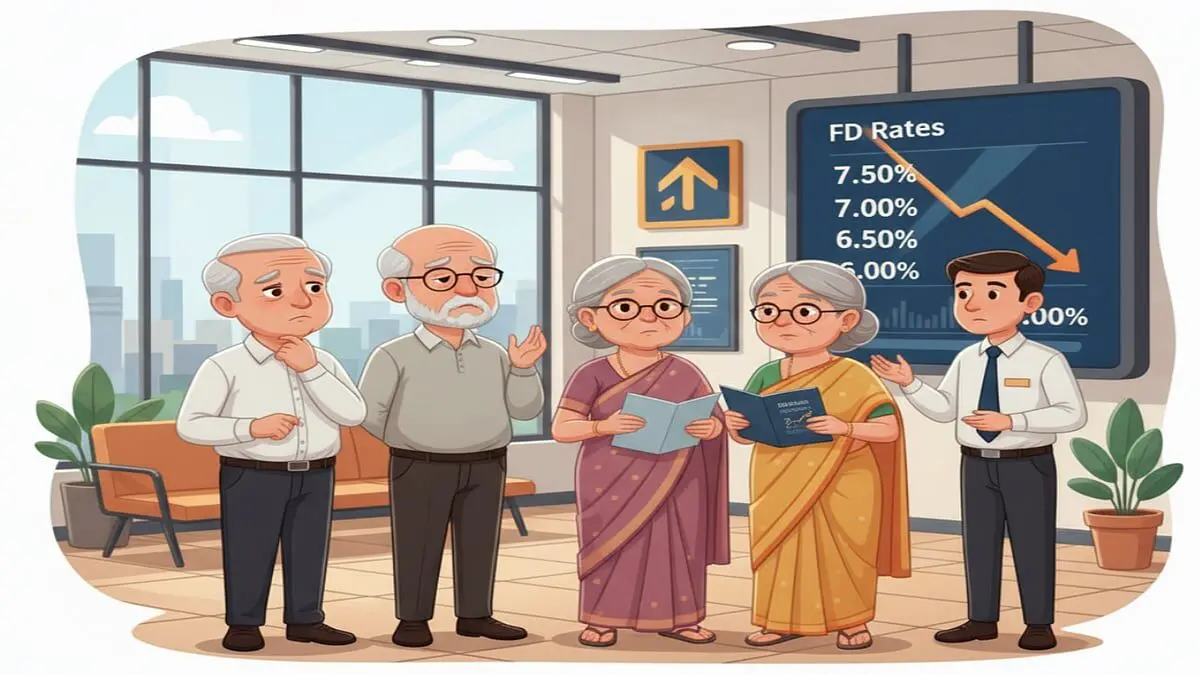New Delhi: In a significant update for investors, several banks, including Bank of Baroda and Central Bank of India, have revised their fixed deposit (FD) interest rates as of September 13, 2025. With interest rates trending downward, these fixed deposits continue to offer a stable option for capital safety amidst a fluctuating economic landscape. Senior citizens, in particular, will benefit from specific revised rates designed to encourage savings in a volatile market.
Current Trends in Fixed Deposit Rates
Many of India’s leading banks have recently adjusted their fixed deposit interest rates to reflect ongoing shifts in the economy. For instance, Bank of Baroda, Central Bank of India, CSB Bank, Jana Small Finance Bank, and Suryoday Small Finance Bank have all made their moves during the week ending September 13, 2025. These banks have reduced their FD rates as prevailing market conditions have made it challenging for institutions to maintain higher returns.
This downward trend in interest rates is indicative of the broader financial landscape. According to the Reserve Bank of India (RBI), lower repo rates are aimed at stimulating economic activity but may have the unintended effect of dissuading savers who rely on fixed income instruments for stability. As a result, while fixed deposits remain a staple in many traditional investment portfolios, their competitiveness has significantly waned compared to earlier in the year.
Why Fixed Deposits Remain Important
Despite the recent decline in rates, fixed deposits are still viewed as a reliable investment option. For example, a retiree who primarily depends on fixed income can find comfort in the predictability that FDs provide. With market volatility affecting equities and mutual funds, many are turning to fixed deposits as a safer choice to secure their finances.
In a typical scenario, consider a retired couple living in Chennai who invested in a fixed deposit five years ago at a higher interest rate of 7%. As they now consider renewing their investment, the current FD rate of 5.5% may not seem appealing. However, given the market uncertainties, they might prioritize capital preservation over higher returns, reaffirming FDs as a valuable component of their savings strategy.
Revised Fixed Deposit Rates for Senior Citizens
For senior citizens, fixed deposits offer an even greater advantage, with typically higher interest rates than those accessible to the general public. Here’s a summary of the revised fixed deposit rates offered by the mentioned banks:
| Bank Name | FD Rate for General Public (%) | FD Rate for Senior Citizens (%) |
|---|---|---|
| Bank of Baroda | 5.50 | 6.25 |
| Central Bank of India | 5.80 | 6.40 |
| CSB Bank | 5.90 | 6.50 |
| Jana Small Finance Bank | 6.00 | 6.75 |
| Suryoday Small Finance Bank | 5.70 | 6.35 |
Impact on the Banking Sector and the Indian Economy
The decreased interest rates pose challenges not only for individual savers but also for the overall banking sector. The RBI’s commitment to managing inflation and encouraging economic growth has led policymakers to set lower repo rates, which, while beneficial for borrowers, can impose significant constraints on net interest margins for banks. As banks adjust their offerings, they may need to find new ways to attract deposits without offering excessively high returns.
According to the World Bank, the India’s economic landscape requires a careful balance between managing inflation and maintaining a healthy banking sector. The ongoing fluctuations suggest that future adjustments to FD rates may hinge upon macroeconomic indicators and the RBI’s actions. Institutions like NABARD and the Finance Ministry will be closely monitoring these developments, as they aim to foster conditions conducive to economic growth.
In summary, while the revised fixed deposit interest rates reflect a trend of decreasing returns, particularly in the current economic climate, fixed deposits will continue to play a crucial role for many, particularly senior citizens. The stability, liquidity, and capital safety they provide remain appealing, even as market dynamics shift. As investors navigate these waters, it’s essential to weigh their options holistically and consider all investment vehicles to ensure long-term financial health.
Bankerpedia’s Insight 💡
The recent decline in fixed deposit interest rates from major banks highlights a shifting landscape in India’s banking and finance sector, emphasizing the importance of liquidity and capital safety for investors. While FDs continue to offer stability, lower returns necessitate a reassessment of investment strategies, especially for risk-averse individuals. This trend may prompt savers to explore diversified options beyond traditional fixed deposits to optimize their returns. Staying informed and adapting your portfolio can safeguard your financial future during these changing times.
What Does This Mean for Me? 🤔
- Salaried Person → Lower fixed deposit rates reduce income for salaried individuals.
- Business Owner → Lower fixed deposit rates may reduce investment returns.
- Student → Lower fixed deposit rates may reduce student savings growth.
- Self-employed → Lower fixed deposit returns reduce savings growth potential.
- Homemaker → Lower fixed deposit rates reduce savings income potential.
- Retiree / Senior Citizen → Lower fixed deposit rates reduce income from savings.
- Job Seeker → Lower interest rates might affect savings and investments.
- Farmer / Rural Citizen → Lower fixed deposit rates reduce farmer investment returns.
Research References 📚
- www.outlookmoney.com
- RBI
- SEBI
- Ministry of Finance
- NABARD
- Department of Financial Services (DFS)
- IMF
- World Bank
Loved our Research? ❤️
Bankerpedia turns financial confusion into clarity!
Subscribe to our YouTube channel for unbiased insights, financial literacy & practical banking wisdom.










